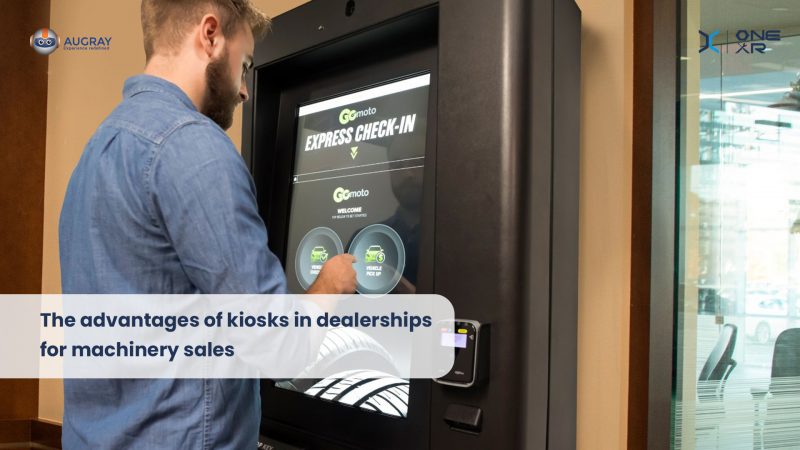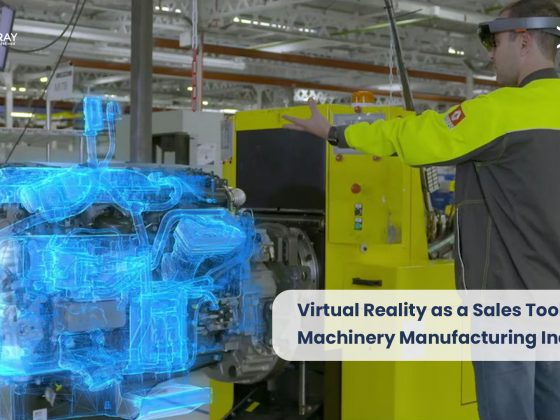In the highly competitive world of machinery sales, it’s important to provide customers with an exceptional experience that sets your dealership apart from the rest. One way to achieve this is by incorporating kiosks into your sales process.
In this blog post, we’ll explore the advantages of kiosks in dealerships for machinery sales and how they can help you unleash your sales potential and reach your targets.
1. Enhanced Customer Experience
Kiosks offer an interactive and engaging experience for customers, allowing them to explore and learn about your products at their own pace. For instance, if you sell tractors, you can set up a kiosk where customers can explore various models and features of the tractor.
By providing a self-service option, you can reduce wait times and improve overall customer satisfaction. With kiosks, customers can browse product information, compare models, and even customize their own equipment, all without the need for assistance from sales staff. This level of convenience and accessibility can create a more positive buying experience and help build customer loyalty.
2. Increased Sales Opportunities
By incorporating kiosks into your dealership, you can expand your sales opportunities beyond regular business hours. For example, if you set up a kiosk at a trade show or exhibition, customers can browse and research products even after the event has ended.
Kiosks can be available 24/7, allowing customers to explore and research products at any time. This extended availability can lead to increased sales and revenue, especially for customers who prefer to do their research and make purchases outside of typical business hours.
3. Improved Efficiency
Kiosks can also improve efficiency in your dealership operations. By reducing the need for sales staff to assist customers with basic information and product navigation, your staff can focus on higher-level tasks such as closing deals and providing personalized service.
Additionally, kiosks can be set up to collect customer information, such as contact details and product preferences, which can be used for targeted marketing campaigns and customer follow-up. For instance, if a customer leaves their email address on the kiosk, you can use it to send them newsletters and promotional offers.
4. Customizable Options
Kiosks can be customized to meet the specific needs of your dealership and product offerings. You can create a unique interface that reflects your brand and showcases your products in a visually appealing way.
Additionally, you can incorporate features such as virtual product demonstrations, augmented reality experiences, and other interactive tools to engage customers and provide an immersive buying experience. For example, if you sell heavy machinery, you can set up a kiosk where customers can wear virtual reality headsets and experience the machinery in action.
5. Cost-effective Solution
Implementing kiosks can be a cost-effective solution for dealerships looking to improve their sales process. By reducing the need for additional staff, kiosks can help save on labor costs. Additionally, kiosks can be set up in various locations, such as trade shows and events, to expand your sales reach without the need for additional physical space or staff. For instance, if you have limited space in your dealership, you can set up a kiosk outside to attract potential customers.
Implementing kiosks in a dealership for machinery sales can present a number of challenges. Here are some of the potential challenges that you may face:
- Integration with existing systems: One of the biggest challenges with implementing kiosks is integrating them with your existing systems. This includes everything from your inventory management system to your CRM system. You’ll need to ensure that the kiosks can access and update the necessary data in real-time.
- Hardware and software maintenance: Another challenge is ensuring that the kiosks are always up and running. This includes maintaining the hardware and software, updating software and firmware, and ensuring that any issues are resolved in a timely manner.
- User experience: User experience is critical for kiosks. The kiosk should be intuitive and easy to use, with clear instructions and prompts. You’ll need to ensure that the kiosk interface is designed to accommodate a range of users, including those who may not be familiar with the technology.
- Security: Security is also a major concern when it comes to implementing kiosks. You’ll need to ensure that the kiosks are secure and that any data collected or entered is encrypted and protected. You’ll also need to ensure that the kiosks are physically secure and protected from theft or damage.
- Maintenance and support: Finally, you’ll need to ensure that you have the resources in place to maintain and support the kiosks. This includes having trained staff on hand to troubleshoot any issues, as well as having spare parts and backup equipment available in case of hardware failure.
Overall, implementing kiosks in a dealership for machinery sales can be a complex undertaking, but with careful planning and attention to detail, it can provide significant benefits for both customers and dealerships.
Here are the steps to implement kiosks in dealerships for machinery sales:
- Determine the location: Identify the best location in the dealership to place the kiosks. It should be easily accessible for customers and visible from various parts of the showroom.
- Choose the type of kiosk: Decide on the type of kiosk to be used, such as standalone kiosks, wall-mounted kiosks, or tablet kiosks. Consider the size, placement, and functionality of the kiosk based on the available space in the dealership.
- Select the software: Choose software that can be easily integrated into the dealership’s existing system. The software should have a user-friendly interface, and it should provide customers with detailed information about the machinery available for sale.
- Customize the kiosk: Customize the kiosk to reflect the dealership’s brand and style. Add features such as touch screens, printers, and scanners for a more interactive experience for customers.
- Train the staff: Train the dealership staff on how to operate the kiosks and assist customers. They should be able to answer any questions customers may have and provide technical support if needed.
- Promote the kiosk: Promote the kiosk through advertising and marketing efforts. Use social media, email, and other channels to promote the kiosk and its features to potential customers.
- Monitor and analyze: Monitor the kiosk’s usage and analyze the data to identify any issues or areas for improvement. Use the data to optimize the kiosk’s functionality and improve the overall customer experience.
By following these steps, dealerships can successfully implement kiosks for machinery sales, providing customers with a more engaging and interactive experience while streamlining the sales process for the dealership.
In conclusion, kiosks offer numerous advantages for dealerships in the machinery sales industry. They provide an enhanced customer experience, increased sales opportunities, improved efficiency, customizable options, and a cost-effective solution for dealerships looking to improve their sales process.
By incorporating kiosks into your dealership, you can unleash your sales potential and reach your targets. So why not consider adding kiosks to your dealership operations today?










